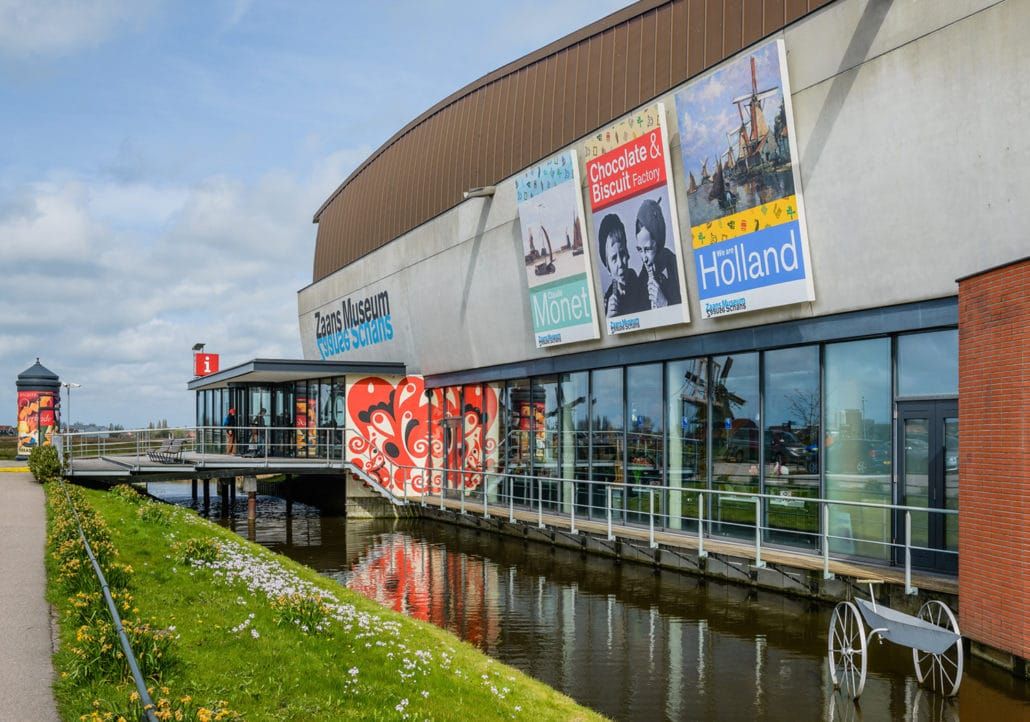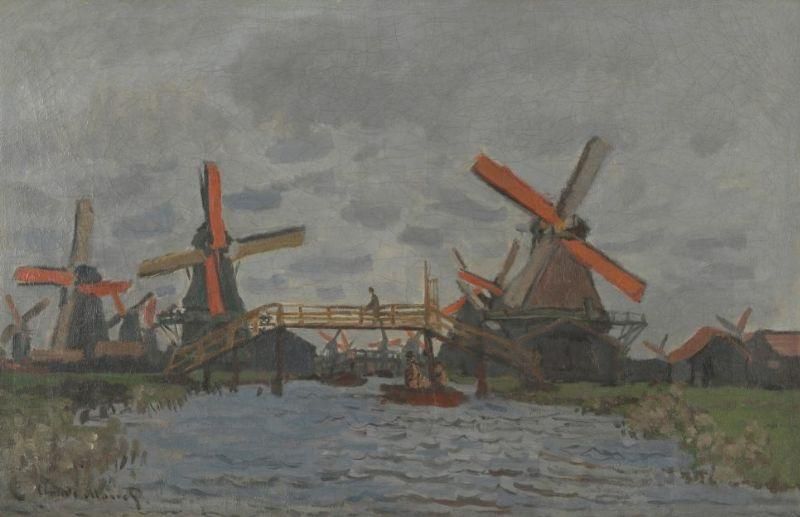Thieves Attempt to Steal a Monet From a Dutch Museum—but Drop It Mid-Escape
The would-be robbers tried to take an 1871 landscape by the French Impressionist from the Zaans Museum in Zaandam
:focal(1599x1112:1600x1113)/https://tf-cmsv2-smithsonianmag-media.s3.amazonaws.com/filer/53/80/5380295b-b838-4a94-a881-a8ca8daf6005/claude_monet_de_voorzaan_en_de_westerhem_1871_collectie_zaans_museum.jpeg)
On Sunday morning, two armed robbers attempted to steal a Claude Monet painting from a Dutch museum. Luckily, they didn’t get far: As the men tried to escape, a quick-thinking bystander intervened. One of the thieves dropped the Monet in the ensuing scuffle. Then, reports Dutch broadcaster NH Nieuws, both suspects fled the scene on a black motorcycle.
Nobody was hurt, and the painting has since been safely restored to its home at the Zaans Museum in the city of Zandaam, according to a statement. Witnesses heard screaming and said that one of the thieves fired shots at least once during the altercation, per Dutch newspaper Noordhollands Dagblad. Authorities recovered the abandoned getaway motorcycle nearby but are still searching for the two suspects.
Museum leaders closed the institution Monday and Tuesday in light of the incident, reports Taylor Dafoe for Artnet News.
“We are relieved to say that nobody got hurt and that [the men] were unable to steal anything. Nevertheless, we are very shocked by the incident,” says the museum in the statement. “We are currently investigating if the painting has been damaged due to the incident, meaning we are unable to put it on display at the moment.”

The would-be robbers’ target was Monet’s De Voorzaan en de Westerhem (1871). The 15- by 28-inch oil painting depicts a muted seaside landscape, with houses and three windmills rising above a distant shoreline.
The Zaans Museum purchased the painting in 2015 for around $1.4 million (€1.2 million)—a then record-breaking acquisition for the gallery, reports Artnet News. Before the robbery, the landscape was featured in an ongoing exhibition dedicated to the Impressionist’s travels in the Zaandam region.
Monet painted De Voorzaan en de Westerhem while living with his first wife, Camille Doncieux, and their son in Zaandam during the summer of 1871. The young family had fled from Paris to London the previous year, at the outset of the Franco-Prussian War, but soon relocated to the Netherlands.
While in exile, Monet sold a handful of his paintings and drew on a large inheritance left by his father, who died in early 1871, to support his comfortable lifestyle, according to an online exhibition from the Zaans Museum.
During his time in the Zaandam area, the painter resided in the Hotel de Beurs and traveled daily to paint scenes of the Dutch countryside, creating at least 25 works during his four-month stay.

In De Voorzaan en de Westerhem, Monet captured a quickly changing landscape. By 1916, all three windmills pictured in the composition had been torn down, according to the Rembrandt Association, which helped the museum purchase the work in 2015.
“Zaandam is particularly remarkable and there is enough to paint for a lifetime,” Monet wrote to friend and fellow artist Camille Pissarro in 1871, per the association’s website. “Houses of all colors, mills by the hundreds and delightful boats.”
Though Monet would later gain fame for his abstract renderings of water lilies and his lush garden in Giverny, France, the painter was not yet well known during his stint in the Netherlands. Indeed, the label “impressionist,” originally intended as an insult, was not coined by the press until 1874, according to Tate Britain.
Evert van Straaten, a Rembrandt Association board member who was involved in the acquisition process, noted in a 2015 newsletter that curators selected the work in part because it demonstrated Monet’s “very modern” approach to painting, even in the earliest stages of his career.
“What we especially like about [the painting] is that it is so Dutch,” van Straaten said, per Google Translate. “Impressionistic, a cloudy sky, but with very little drama and a limited palette. … That dichotomy of land and water is special, almost De Stijl-like, very minimalistic.”
/https://tf-cmsv2-smithsonianmag-media.s3.amazonaws.com/accounts/headshot/nora.png)
/https://tf-cmsv2-smithsonianmag-media.s3.amazonaws.com/accounts/headshot/nora.png)